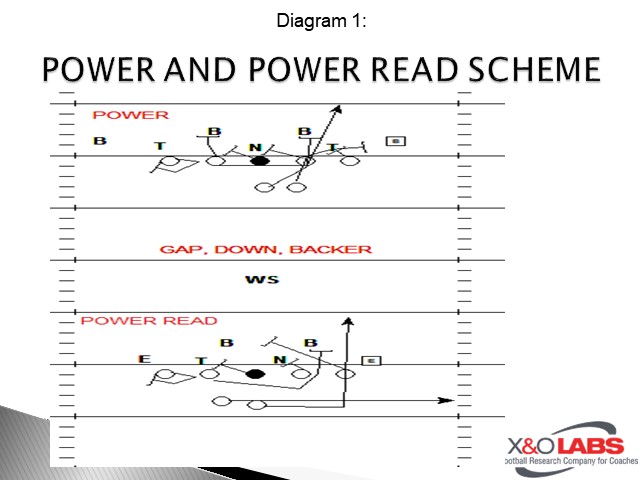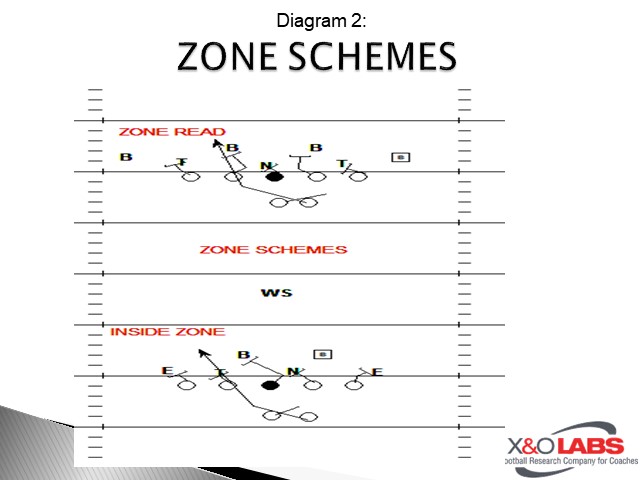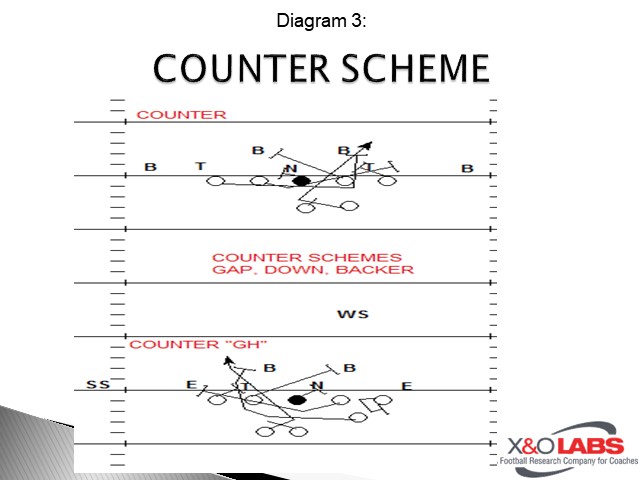By Brandon Clay
Offensive Coordinator/OL Coach
Haltom High School (TX)
Twitter: @brandonclay88
Haltom had finished 6-5 in the previous year before I became OC, they had made the play-offs for the first time since 2000, and the first winning season since 2009. Head Coach Jason Tucker wanted to invest in an up-tempo, no-huddle approach, I had a background in RPO and no-huddle. That investment paid off, as at the time of this report, we are 12-0, finished District Champs, and are in the 3rd round of play-offs.
Part 1: Establishing Base Plays
We decided in order to play fast we needed to simplify the blocking schemes, eliminate as many “rules” as possible, and package a RPO with each play. After experimenting with wrist bands, we found them to be too rigid, too slow. We felt our kids could not get lined up fast enough, getting caught up with wrist band, rather than lining up and getting the play. We settled on signals, and it really allowed us the freedom to check plays and get what we needed to the kids.
We have an All-State QB who can run and pass, so we decided that our base plays would be:
- Zone Read with, the option of Stop, Flat or Spot attached as RPO
- Power with Bubble/Slant
- Power Read with Jab/Go
- Counter with Bubble Screen
- Inside Zone with a Slant
In order to go fast and reduce the amount of time spent with blocking rules, we decided that gap schemes would give us the best chance of being successful and would constitute a majority of our plays.
For Power, Power Read the scheme is the same, we utilize the traditional, gap, down backer on the play side, with the backside guard pulling to seal, and “zip gate” from the backside tackle.

Our Zone blocking scheme is quite simple, we will full zone on Zone Read, not blocking the E.M.O.L. For Inside Zone blocking, we utilize the same set of rules, but we leave the backside inside LB unblocked, and block the back-side end.

For Counter schemes, the play side is blocked exactly as Power and Power Read. The back-side guard will pull and kick the E.M.O.L. and the backside tackle will pull and seal the play side linebacker. For GH, we make a stay call, the H-Back will replace the tackles pull and seal. The tackle will “zip gate” as he does on Power and Power Read.

Part 2: Setting the Tempo
The most trying part of establishing an up-tempo, H.U.N.H. offense is getting the pace in practice, not only for players but for coaches. The 3 main keys, in my opinion, are the following:
- Practice Scripting: In order to go fast, be efficient you have to script, script, and script! We script Inside Run, Team, and our NASCAR period. For the first 3 weeks (including Spring Ball), we went as fast as possible in practice, our goal was to be faster in practice than in the games. We didn’t stop Team for the SPEC OPS (look team) to get lined up, it was more important that we get lined up and snap the ball. By scripting our plays, it reduced time, it made coaches signal faster and the kids had to keep pace.
- Coaches Must Invest: Regardless of how long you been a coach, if you make the investment to be Up-tempo H.U.N.H. you will be forced to change some of your practice habits. Stopping the Team session because a WR split isn’t perfect or the SPEC OPS team isn’t aligned perfectly is something you will have to live with, in order to establish a superior pace. You must supplant this with watching film, we film everything, 1 x 1, 7 x 7, Inside Run, Team. You also have to get your kids to watch film, THEY have to invest in themselves, and learn to critique their own performance. HUDL has a wealth of data, ease of use and its available on their phones, you must use that resource if possible.
- There Are No Half-Measures: Once you decide to play at this pace you will begin to see your kids WANT to go fast. In many games this year, I have had our kids tell me, “We need to go faster” and as a result when we “slow down” our performance dropped. We have different tempos, like most up-tempo teams, but we are at our peak when we are running over the Umpire to get the ball set and snapped before the defense gets a signal in.








